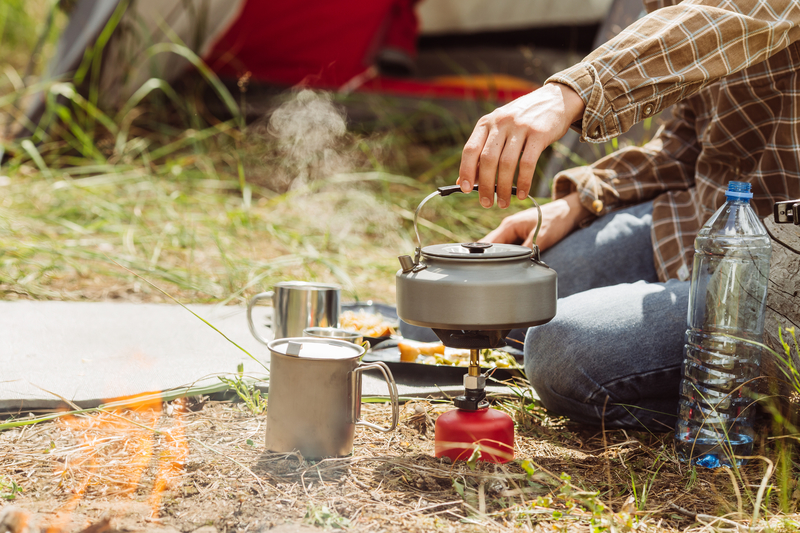From the Marines to the Boy Scouts, we have always been told that the only way to treat water and kill dangerous parasites, bacteria and viruses is to boil it.
While boiling water will kill off all the threats, it is overkill; here is what you need to know.
So how much heat? And for how long?
Depending on your source, “conventional wisdom” has told us for decades that bringing water to a rolling boil at the very minimum and holding it there for a period of time is what is required to kill these microscopic pathogens.
For example, let’s take a look at what the Boy Scouts of America say about treating water:
“The surest means of making your drinking water safe is to heat it to a rolling boil—when bubbles a half inch in diameter rise from the bottom of the pot. While this is a simple method, it does require time and fuel.”Now let’s take a look at what the United States Marine Corp. recommends for treating water:
“Purify all water obtained from natural sources by using iodine tablets, bleach, or boiling for 5 minutes.”
So are the Boy Scouts of America and the Marines wrong? No. Bringing your water to a full boil will absolutely kill all common pathogens that we have all learned to take so seriously because can make us sick with illnesses like Giardia, Cryptosporidium, E. coli and the rest. The problem with bringing your water to a boil, as you are about to learn, is that doing so is actually complete overkill when it comes to treating water for harmful microbes!
OK, so how much fuel are you wasting exactly?
Did you know that heating your water from 200° F to 212° F… just that last extra 12° to get your water to it’s boiling point… actually uses TWICE as much fuel as it does just to get your water to that initial 200°?? Well… it does. TWICE as much fuel!So now that we know what the Boy Scouts of America and the Marines say about purifying water (and we love both of these organizations!), let’s see what science tells us about using heat to purify water.
Important Temperatures to Factor In to this Equation:
212° F = Temperature at which water boils
160° F = Temperature at which milk is generally pasteurized
149° F = Temperature at which Hepatitis A is quickly killed
140° F = Temperature at which bacteria (V. cholerae, E. coli and Salmonella typhi) and Rotavirus are quickly killed
131° F = Temperature at which worms & protazoa cysts (Giardia, Cryptosporidium and Entamoeba) are quickly killed
As you can see from the temperatures listed above, the pathogens that we are primarily concerned about when it comes to safe drinking water are ALL killed (quickly) at temperatures much lower than 212°, the temperature at which water boils. That being the case… why would you unnecessarily waste any more fuel than you need to heating up your water those additional 63°? Great question, isn’t it?
Now let’s take another look at that milk pasteurization temperature above: 160° F.
Pasteurization is a process invented by French scientist Louis Pasteur during the early nineteenth century. Pasteur discovered that the pasteurization process made it possible to heat the milk to high enough temperature to kill all harmful microorganisms without “cooking” the milk causing it to curdle.Now of course you never have to worry about your water curdling, but an important lesson can be gleaned from this milk pasteurization process that can be extremely beneficial: Water, like milk, does not have to be boiled to be safe to drink!
Temperature + Time = Pasteurization
Pasteurization is a process that occurs based on two variables: temperature and time. You see… you can actually pasteurize water at lower temps if you do it for a longer duration. This is extremely helpful in situations where A) you aren’t able to effect fire for heating your water, or B) you can make fire but you do not have a suitable container for boiling that can withstand the intense heat of your fire. Lower temperature/longer duration pasteurization can actually be done with discarded plastic 2 liter bottles set in the sunlight for longer periods of time (typically 6 hours). This method of disinfecting water is known as the SODIS (Solar Water Disinfection) method. You can even put something black or reflective behind your bottle to speed up the process!
So Why Do So Many Advocate Boiling Your Water?
Great question with a very simple answer: When those bubbles start to roll in your container of water, that is nothing more than a clear VISUAL INDICATOR that your water has become hot enough (actually MORE than enough) to have killed all of those little nasties. It works. It’s effective.
Given this information, should you avoid boiling water to sterilize it?
The short answer is “no,” boiling makes a great benchmark for knowing without a doubt that your water is safe to drink.
But if you have limited fuel or sensitive storage containers, you can get by via the list above – as long as you know for sure what the temperature of your water actually is.
To learn more about purifying water, take a look at Equip 2 Survive!
